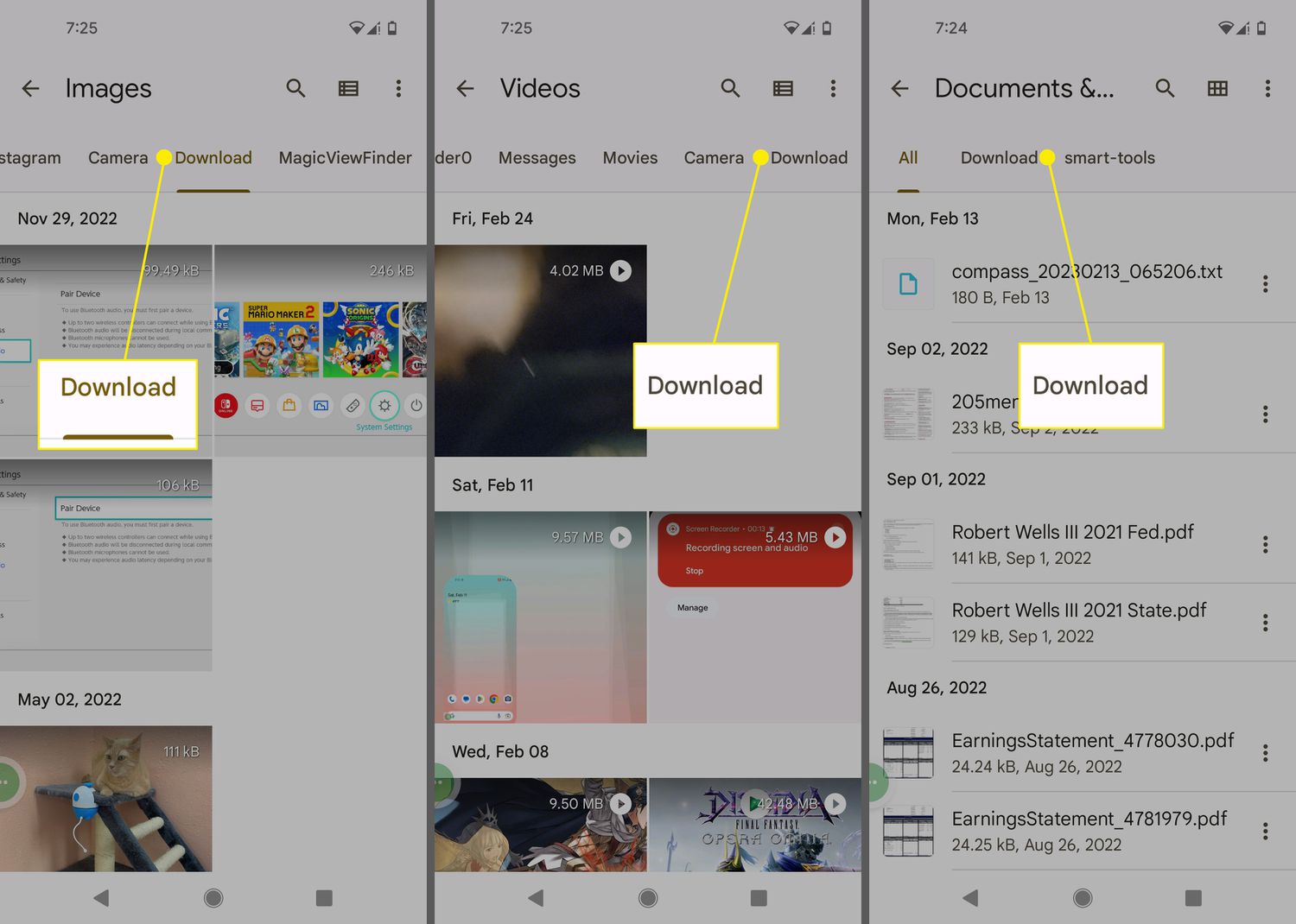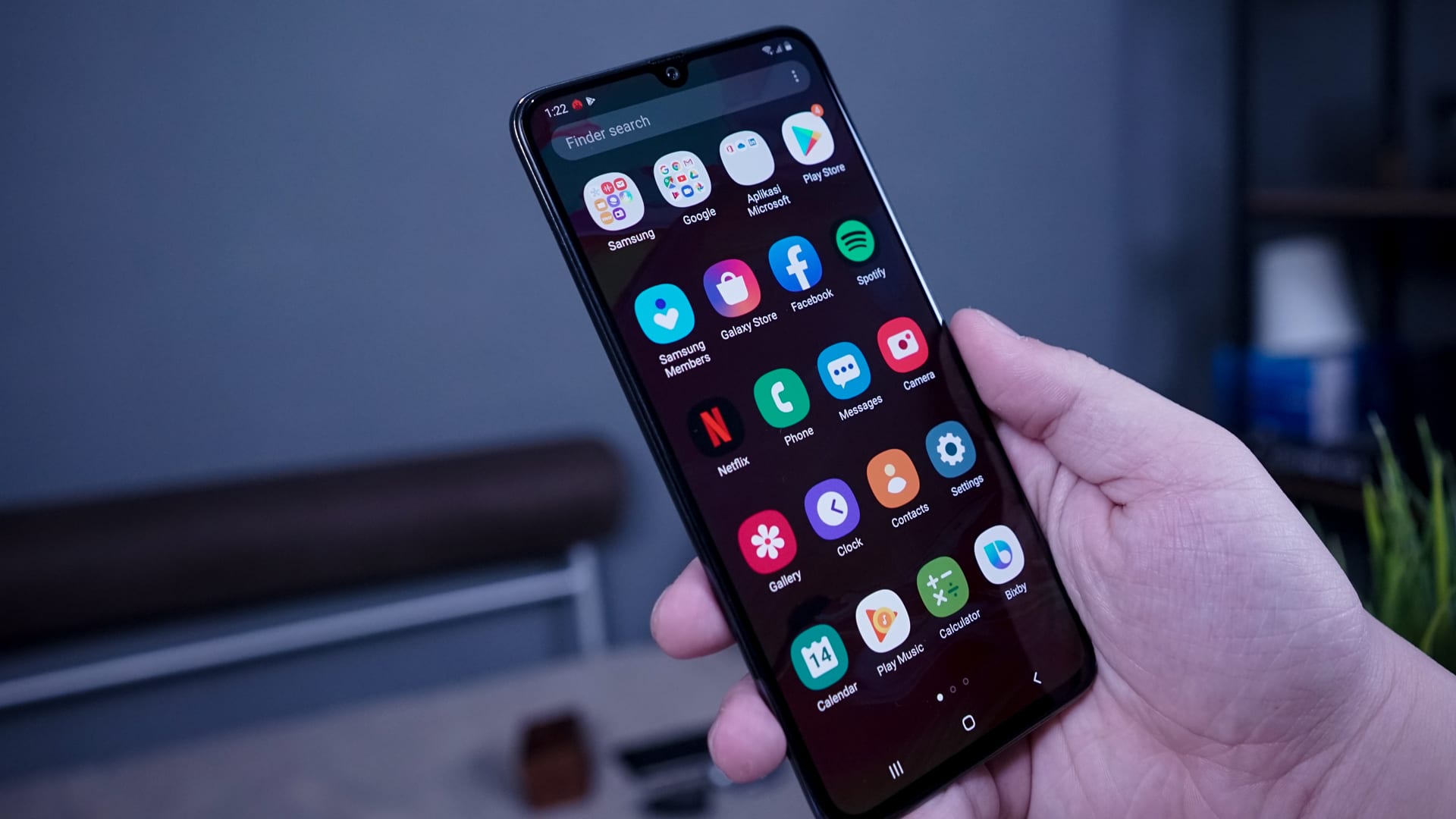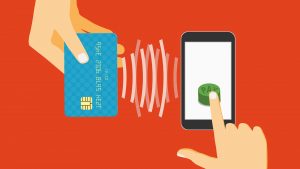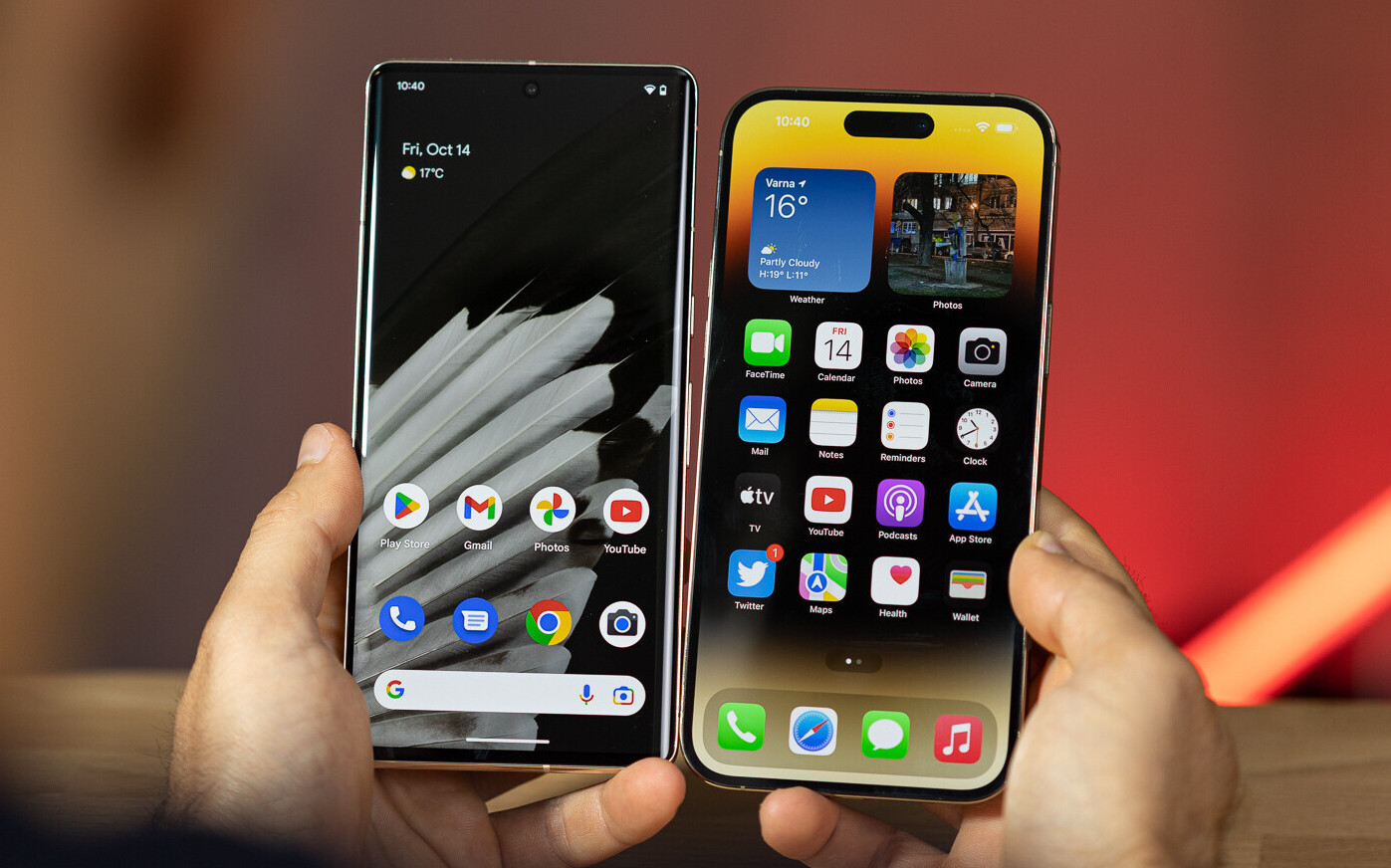Introduction
Attachments are an essential part of our digital communication, allowing us to exchange files, images, and documents with ease. Whether it’s an important email, a message from a friend, or a file from a website, knowing how to download attachments on your Android device is crucial. In this article, we will explore various methods to help you download attachments effortlessly.
Understanding how attachments work is the first step in effectively managing them. Attachments are files that are linked or embedded within an email, messaging app, website, or cloud storage service. They can include documents, images, videos, audio files, and more. When you receive an attachment, it is often necessary to download it to your device before accessing or opening it.
Now, let’s delve into the different methods you can use to download attachments on your Android device. Each method is tailored to specific scenarios, ensuring that you can download your attachments quickly and securely.
Understanding Attachments
Attachments play a vital role in our digital communication by allowing us to share files and documents with others. When we receive an attachment, it is important to understand its nature and how it is handled on an Android device.
An attachment is a file that is sent along with an email, message, or found on a website. It can be a photo, a document, a video, or any other digital file. Attachments are often represented by a paperclip icon in emails or a file icon in messaging apps.
Attachments can be either linked or embedded. A linked attachment refers to a file that is hosted on a server or cloud storage and is accessed through a provided hyperlink. When you click on the link, it opens the file in a web browser or triggers a download prompt. On the other hand, an embedded attachment is directly included within the email or message itself. It is displayed as part of the content, such as an image embedded in an email body.
When you receive an attachment on your Android device, it may be necessary to download it before you can access or open it. This is because the file is often stored remotely and needs to be saved locally on your device for easy retrieval.
Attachments can have different file formats, such as PDF, DOCX, PNG, or MP4. Your Android device is equipped with built-in apps and third-party applications that can handle various types of attachments. For example, the Adobe Acrobat Reader app can open PDF files, while media players can play video and audio files.
Understanding how attachments work on your Android device is crucial for efficient file management. Whether you’re downloading attachments from emails, messages, websites, or cloud storage, having a clear understanding of the process ensures that you can access and utilize your files effectively.
Method 1: Downloading Attachments from Email
Email is one of the most common ways to receive attachments, whether it’s a document from a colleague, a photo from a friend, or a receipt from an online purchase. Luckily, downloading attachments from emails on your Android device is a straightforward process. Here’s how:
1. Open your email app: Launch the email app on your Android device and navigate to the email containing the attachment you want to download.
2. Locate the attachment: In the email, you will usually find the attachment indicated by a paperclip icon or a thumbnail image. Tap on the attachment to view it.
3. Download the attachment: Once you have opened the attachment, you may have the option to download it directly. Look for a download button or an arrow icon, and tap on it to initiate the download.
4. Choose a location: After tapping the download button, you may be prompted to choose a location on your device where the attachment will be saved. Select a folder or directory where you can easily find and access the downloaded file later.
5. Monitor the download progress: Depending on the size of the attachment and your internet connection speed, the download may take a few seconds or longer. Keep an eye on the download progress bar or indicator to track the download process.
6. Access the downloaded attachment: Once the download is complete, you can access the downloaded attachment in your file manager or the designated folder you selected earlier. From there, you can open, share, or move the file as needed.
Keep in mind that the steps above may vary slightly depending on the email app you are using. However, the general process remains the same: locating and downloading the attachment to your Android device for easy access and use.
Method 2: Downloading Attachments from Messaging Apps
Messaging apps have become increasingly popular for communication, allowing us to send and receive various types of attachments, such as photos, videos, and documents. If you’ve received an attachment through a messaging app on your Android device, here’s how you can download it:
1. Open the messaging app: Launch the messaging app on your Android device and navigate to the conversation or chat where the attachment has been sent.
2. Find the attachment: Look for the attachment within the conversation thread. It may be displayed as a thumbnail image, file icon, or a link. Tap on the attachment to view it.
3. Download the attachment: Once you have opened the attachment, you may have the option to download it directly. Look for a download button or arrow icon, and tap on it to initiate the download process. The attachment will start downloading to your device.
4. Choose a location: After tapping the download button, you may be prompted to select a location on your device where the attachment will be saved. Choose a folder or directory that you can easily access and manage the downloaded file.
5. Monitor the download progress: The download progress may be displayed as a progress bar or an indicator. Monitor the progress to know when the download is complete. Depending on the file size and your internet connection speed, the download time may vary.
6. Access the downloaded attachment: Once the download is complete, you can find the downloaded attachment in your file manager or the designated folder you selected earlier. From there, you can open, share, or move the file as needed.
Remember that different messaging apps may have slightly different processes for downloading attachments. However, the general steps above should apply to most popular messaging platforms on Android devices.
Method 3: Downloading Attachments from Websites
Downloading attachments from websites on your Android device allows you to access files, documents, and media shared by websites directly. Whether it’s a PDF document, an image, or a software installer, here’s how you can download attachments from websites:
1. Open your web browser: Launch your preferred web browser on your Android device and navigate to the website where the attachment is located.
2. Locate the attachment: Explore the web page to find the attachment you want to download. It may be linked with text, an image, or a download button. Tap on the attachment or the download link to proceed.
3. Initiate the download: Upon tapping the attachment or download link, your browser will initiate the downloading process automatically. You may see a progress bar or indicator showing the download status.
4. Choose a location: Once the download starts, you may be prompted to choose a location on your device where the attachment will be saved. Select a folder or directory that you can easily locate and manage later.
5. Monitor the download progress: Depending on the file size and your internet connection speed, the download may take a few moments or longer. Monitor the progress bar or indicator to track the download process.
6. Access the downloaded attachment: After the download is complete, you can find the attachment in your device’s file manager or the designated folder you selected earlier. From there, you can open, share, or move the file as needed.
Note that some websites may require you to complete certain actions, like solving a captcha or logging in, before allowing you to download attachments. Additionally, be cautious when downloading files from unfamiliar websites to avoid downloading malicious files or viruses.
By following these steps, you can easily download and access attachments from websites directly on your Android device.
Method 4: Downloading Attachments from Cloud Storage Apps
Cloud storage apps provide a convenient way to store and access your files from anywhere. They also allow you to share attachments with others easily. If you have received an attachment through a cloud storage app on your Android device, here’s how you can download it:
1. Open the cloud storage app: Launch the cloud storage app on your Android device. You may need to sign in to your account if you’re not already logged in.
2. Locate the attachment: Navigate to the folder or directory where the attachment is saved. Most cloud storage apps have a user-friendly interface that allows you to browse and search for files.
3. Download the attachment: Tap on the attachment you wish to download. Depending on the app, you may need to select the “Download” or “Save” option to initiate the download process.
4. Choose a location: After selecting the download option, you may be asked to choose a location on your device where the attachment will be saved. Select a folder or directory that you can easily access and manage the downloaded file.
5. Monitor the download progress: The cloud storage app will show a progress indicator or a download status to keep you informed about the download progress. The time it takes to download the attachment will vary depending on the file size and your internet connection speed.
6. Access the downloaded attachment: Once the download is complete, you can find the downloaded attachment in your device’s file manager or the directory you selected earlier. From there, you can open, share, or move the file as needed.
Cloud storage apps also allow you to sync your files across multiple devices, ensuring that you have access to your attachments wherever you go. Make sure to have the cloud storage app installed on your other devices and sign in to the same account to access your downloaded attachments seamlessly.
By following these steps, you can easily download attachments from cloud storage apps on your Android device and make the most of your cloud storage service.
Tips for Managing Attachments
Attachments can quickly accumulate on your Android device, taking up storage space and cluttering your files. To help you effectively manage your attachments and keep your device organized, here are some useful tips:
1. Regularly review and delete unnecessary attachments: Take the time to review your attachments and delete those that are no longer needed. This will help free up storage space and keep your device running smoothly.
2. Use file management apps: Consider installing a file management app on your device. These apps offer advanced features for organizing and managing your files, including attachments. You can use them to create folders, move files, and easily locate specific attachments.
3. Sort attachments into folders: Create separate folders for different types of attachments, such as documents, images, and videos. Sorting your attachments into folders makes it easier to locate specific files when you need them.
4. Utilize cloud storage services: Upload your attachments to a cloud storage service like Google Drive, Dropbox, or OneDrive. This allows you to access your files from different devices and reduces the need for storing large attachments directly on your device.
5. Enable automatic downloads: Check if your email or messaging app has an option to automatically download attachments. This can save you time by ensuring that attachments are downloaded to your device as soon as they are received.
6. Be cautious when opening attachments: Exercise caution when opening attachments from unknown or untrusted sources. Attachments can contain malware or viruses that may harm your device or compromise your data. Scan attachments with a reliable antivirus app before opening them.
7. Rename attachments for easy identification: Consider renaming attachments with descriptive names that reflect their content. This will make it easier to search for specific files and help you quickly identify them among your collection of attachments.
8. Regularly backup your attachments: Back up your attachments to an external hard drive, computer, or cloud storage service. This ensures that even if something happens to your device, your important attachments will still be accessible.
By implementing these tips, you can effectively manage your attachments and maintain a well-organized digital file system on your Android device.
Conclusion
Downloading attachments on your Android device is an essential skill that allows you to access and utilize files, documents, and media shared with you. From email attachments to messaging apps, websites, and cloud storage services, there are various methods to download attachments effortlessly.
By understanding the nature of attachments and the process of downloading them, you can effectively manage your attachments and keep your device organized. Regularly reviewing and deleting unnecessary attachments, utilizing file management apps, and sorting attachments into folders are all helpful strategies for efficient attachment management.
Cloud storage services offer a convenient way to store and access your attachments from multiple devices, while enabling automatic downloads can save you time. It’s important, however, to be cautious when opening attachments from unknown sources and to scan them for potential threats.
By following the tips outlined in this article, you can streamline your attachment management process and ensure smooth operations on your Android device. Embrace the convenience of downloading attachments and make the most of the files and information shared with you.
So, the next time you receive an attachment, whether it’s a document, a photo, or a file, you’ll have the knowledge and tools to easily download and access it on your Android device.

























